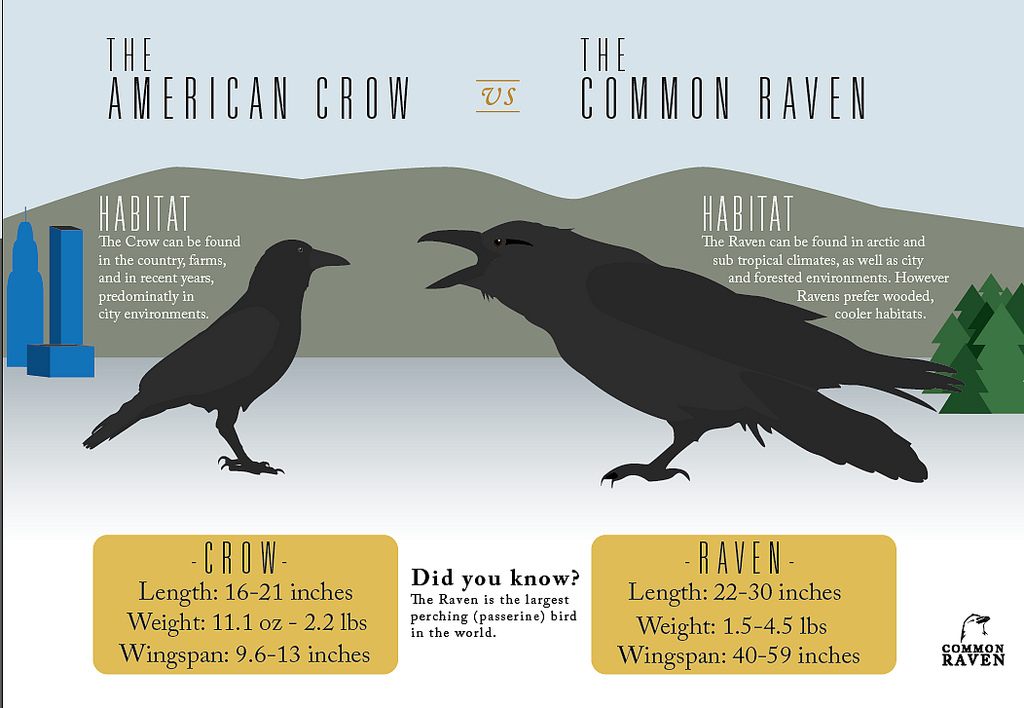Understanding The Raven And Crow Difference
When it comes to birds that have captured the human imagination, ravens and crows stand at the forefront. Their sleek black feathers, intelligent behaviors, and mysterious aura make them subjects of folklore and fascination. However, many people often confuse these two avian species, not realizing that they possess distinct characteristics that set them apart. In this article, we will delve into the raven and crow difference, exploring their physical traits, behaviors, and habitats.
As members of the Corvidae family, both ravens and crows share a close genetic lineage, which is why they often appear similar at first glance. Yet, their differences are significant enough to warrant a detailed comparison. Understanding these differences not only enhances our appreciation of these remarkable birds but also helps in identifying them in the wild.
From their calls to their social behaviors, the nuances between ravens and crows can be fascinating. Whether you're a bird enthusiast or just curious about nature, this exploration of the raven and crow difference promises to be enlightening. Let’s take a closer look at how these two birds compare across various dimensions.
What Are the Physical Differences Between Ravens and Crows?
One of the most noticeable aspects of the raven and crow difference lies in their physical characteristics. Here are some key distinctions:
- Size: Ravens are generally larger than crows. A raven can measure up to 24 inches in length, while crows typically reach about 17 inches.
- Beak Shape: Ravens possess a thicker and more curved beak compared to the straighter, slimmer beak of crows.
- Tail Shape: The tail of a raven is wedge-shaped, whereas a crow's tail is more fan-shaped.
- Plumage: While both birds appear black, ravens have a more iridescent sheen in their feathers.
How Do Their Sounds Differ?
Another critical aspect of the raven and crow difference is found in their vocalizations. Both species are known for their complex calls, but they have distinct sounds:
- Ravens: Their calls are deeper and more resonant, often described as a "croak." They are also capable of producing a variety of sounds, including clicks and whistles.
- Crows: Crows have a higher-pitched cawing sound that is often repeated in a series, sounding more like a "caw-caw-caw."
Where Do Ravens and Crows Live?
The habitats of ravens and crows also differ, which can help in distinguishing between the two. Here’s a brief overview:
- Ravens: These birds prefer more remote and rugged areas, such as mountains, forests, and deserts. They are less likely to be found in urban environments.
- Crows: Crows are highly adaptable and can thrive in various environments, including urban areas, farmlands, and forests.
Are Their Behaviors Different?
Behaviorally, ravens and crows exhibit some intriguing differences:
- Social Structure: Crows are known for their social behavior; they often form large groups or "murders." Ravens, on the other hand, tend to be more solitary or form monogamous pairs.
- Problem Solving: Ravens have shown a higher level of problem-solving ability in studies, often demonstrating innovative behaviors when faced with challenges.
How Do Their Diets Differ?
The raven and crow difference extends to their diets as well. Both birds are omnivorous, but their feeding habits can differ slightly:
- Ravens: They prefer larger prey, such as small mammals and carrion, but will also eat seeds and fruits.
- Crows: Crows are more opportunistic feeders, often scavenging and foraging for insects, grains, and even human food scraps.
What Cultural Significance Do Ravens and Crows Hold?
Throughout history, both ravens and crows have held cultural significance in various societies:
- Ravens: Often associated with mystery and magic, ravens are prominent in mythology, such as in Norse mythology as a symbol of wisdom.
- Crows: Crows are frequently depicted as messengers or omens in folklore, often associated with death or bad luck.
What Are the Conservation Statuses of Ravens and Crows?
Both ravens and crows are widely distributed and generally not considered endangered. However, conservation efforts are important for their habitats:
- Ravens: While their populations are stable, habitat destruction can impact their numbers.
- Crows: Their adaptability has allowed them to thrive, but urbanization can pose a threat to their traditional nesting sites.
Can You Keep a Raven or Crow as a Pet?
Many people wonder if they can keep these birds as pets. Here are some important points to consider:
- Legal Restrictions: In many places, it is illegal to keep a raven or crow as a pet due to regulations protecting native wildlife.
- Social Needs: Both ravens and crows are highly social creatures that require companionship and mental stimulation.
- Commitment: These birds can live for decades in captivity, requiring a long-term commitment from their owners.
In conclusion, the raven and crow difference goes beyond mere appearance; it encompasses vocalizations, habitats, diets, behaviors, and cultural significance. By understanding these differences, we can foster a deeper appreciation for these fascinating birds and their roles in our ecosystems. Whether you find them hauntingly beautiful or incredibly intelligent, both ravens and crows are remarkable creatures deserving of our admiration and respect.
The Remarkable Lives Of Michael Jordan's Twin Daughters
Unveiling The Roots: Where Is Rihanna From?
Unveiling The Allure Of Marie Temara: An Exclusive Insight


